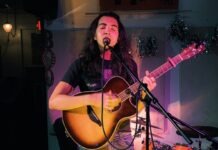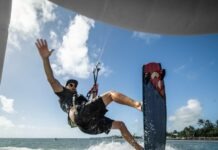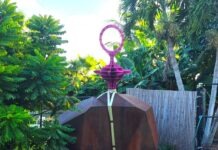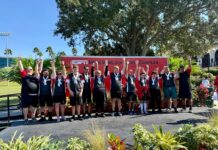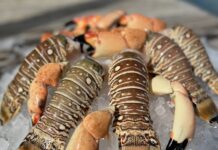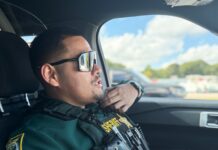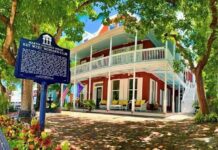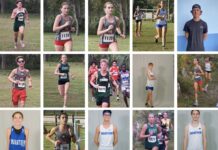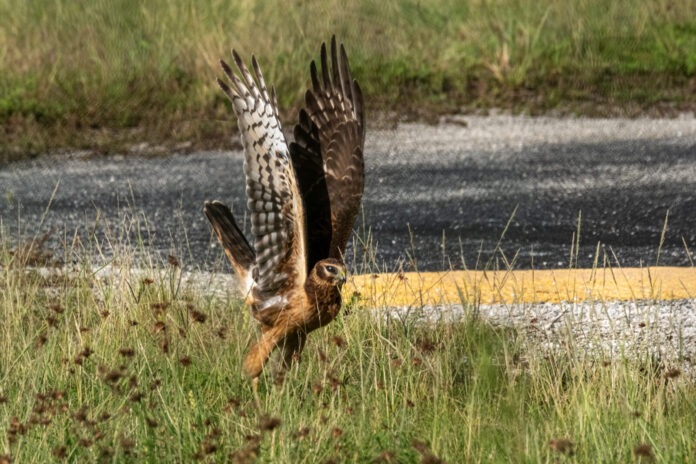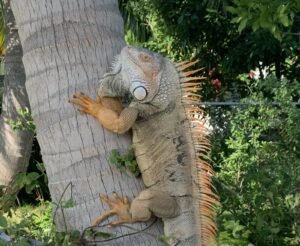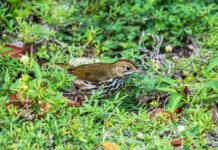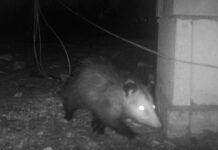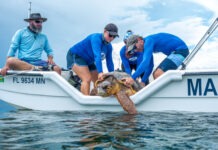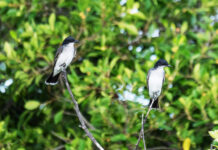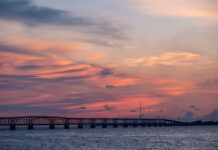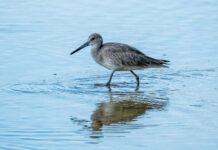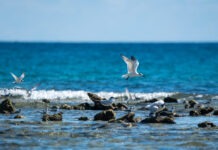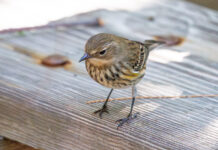I stopped for drive-thru coffee on the way to Boca Chica, but it was too hot to drink until I was parked. So I sat there in the car at the end of Boca Chica Road like a weirdo, taking tiny sips until it cooled.
The first bird of the day, or the first one I noticed outside of the half-dozen white ibis plunging their bills into the roadside grass on Stock Island, was a northern harrier. It was working a pattern on the far side of the green barbed wire that denotes the edge of the air base.
It was working a pattern over the puddles at the end of the runway, flying low and slow in the way that harriers do, no doubt watching and listening for a songbird or shorebird or small mammal to make a wrong move. The bird shot up from behind the fence and above the barricaded part of the road, then swung a small loop, like a skateboarder off a ramp, before dropping back down over the field. It flew behind me and out of sight, disappearing for a minute, then re-emerging over the beach, the bird following the shoreline until it shrunk to a dot.
It repeated this pattern two more times, sans the skateboarder loop, before I finished my coffee and got out of the car.
I had just gotten past the concrete barrier when a man’s voice behind me said not to worry about the dog, he was friendly, but he had just escaped from his mummah. I wasn’t sure what he was talking about until I spotted a teacup yorkie sprinting down the old road, a woman walking a little further behind. When it got close the dog veered towards me, stopped, sniffed my shoes, realized there were no snacks in the offing, and moved on.
One of the great things about Boca Chica Road is there are almost always a good number of birds there. The sargasso that had seemed to overwhelm the place in the summer had thinned to a long strip along the water’s edge, but there were still a good number of shorebirds there. There was a lone ruddy turnstone at first, then a gaggle of properly diminutive least sandpipers, a hexad of long-billed dowitchers, a pair of black-bellied plovers and a willet.
Over the fence my binoculars were drawn to a bright white bird that turned out to be a section of PVC pipe sticking out of the ground, but then there was a reddish egret sally-stepping through one of the ponds, a full dozen black-bellied plovers that leapt into to the air all at once, flew across a different pond and landed together, and a greater yellowlegs looking excessively alert.
The greater yellowlegs’ seeming alertness, and my good mood, probably derived from two opposite perspectives of the same source: the northern harrier.
The general lowdown on northern harriers is they are the most owl-like of raptors. This is because of a physical characteristic called a facial disk, where they have a flattish face that helps direct sound to their ears, sort of like a parabolic mic. It allows them to listen for the scuttling feat of their prey, to track their most minute and covert movements.
Harriers are also characterized by their long wings and long tail, which give them a light wing load, and allows them to fly very slowly, sometimes to the point of a near standstill, like a cyclist doing a track stand. Just when their prey thinks the danger has passed, they can drop down.
In the breeding season, they largely eat small mammals, primarily voles. The harrier population shrinks and grows with the vole population.
In the winter, and on migration, they rely more heavily on songbirds and shorebirds, such as most of the ones I’d seen that morning. Which would explain why the yellowlegs seemed to be spending more time looking around than down.
Every once in a while, someone will ask me what my favorite bird is. It seems an innocent enough question, but it always leaves me stammering and befuddled, at least internally. Trying to narrow it down to one bird just seems so limiting. Any one bird you name is going to leave you regretting the 20 or 30 or 1,000 birds you didn’t name. Why close down your options?
Thinking about it, outside of my wife, I don’t think I have a favorite anything – song, book, musician, color, car, Spice Girl or senator.
Which isn’t to say I don’t have affinities. And there are certain bird species that almost always have priority access to my attention, that I can never get enough of. Northern harriers are one of them. Any time I see one flying with silent, unhurried assurance across a wide open space, I can’t help but watch them until they disappear.
Walking down Boca Chica Road, I was really hoping to see the harrier flying up the beach, so I kept turning around every few steps to make sure it wasn’t going to silently glide past.
I was almost to the far side of the runway when I saw it where I didn’t expect it, a large-ish brown shape on the ground. It was the northern harrier, standing there. It was a young bird, orange-y in the breast.
Birds of prey, when they catch prey, tend to stand on top of it, look around, reach their bill down towards their feet to tear off a few choice bits, then return to looking around while they swallow it, lest some other bird of prey try to steal their food. I thought for a moment that the harrier had finally caught something, but I couldn’t see anything underneath it. And after a minute or two, it never reached down.
Other than when they’ve caught something, you generally don’t see raptors on the ground — not healthy raptors, at least. Harriers are a little different, though. Most of those that migrate come from the more northerly parts of the continent – grasslands and tundra. They actually nest on the ground. Often, there are no trees for miles around.
Maybe it had tried to catch something and missed. Maybe it was just taking a break. But two or three minutes later, it lifted its wings, gave a big flap and flew off away from the fence line.

